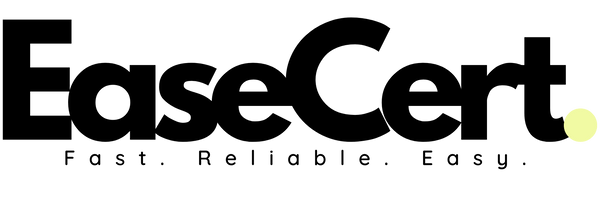
Checklist: Launching a New Product in the EU (2025 Edition)
Launching a product in the European Union can be highly rewarding, but it also comes with strict compliance obligations. The General Product Safety Regulation (GPSR), which replaced the old General Product Safety Directive, now sets a much higher bar for businesses selling in the EU. Companies that are not prepared risk product recalls, fines, or having their listings removed from platforms like Amazon, Etsy, or eBay.
This 2025 checklist gives you a clear, step-by-step overview of what you need to do before placing a new product on the EU market.
1. Confirm the Product Category and Scope
Before anything else, determine whether your product is covered only by the GPSR or if additional EU legislation applies. For example, toys, cosmetics, or electrical products all have specific directives or regulations in addition to GPSR.
You should also define the intended user group. A product marketed for children requires age grading and often stricter testing. Even accessories and packaging can fall under GPSR if they pose risks to consumers.
2. Carry Out a Risk Assessment
Every product must undergo a documented risk analysis. This should cover hazards such as mechanical, chemical, electrical, fire, or choking risks. Where harmonised EU standards exist, use them as proof of compliance. Your findings and mitigation measures form a central part of the product’s technical documentation.
You can start with this free risk analysis template.
3. Prepare the Technical File
The technical file (sometimes referred to as the Digital Product Passport) is mandatory. It must contain:
- A bill of materials and supplier information
- Test reports and declarations of conformity
- A written risk assessment
- User instructions and warnings
- Copies of labels and packaging
This file has to be retained for at least 10 years after the product was last placed on the market and must be updated whenever the product design changes.
4. Appoint an EU Responsible Person
If you are based outside the EU, you cannot sell without appointing an EU Responsible Person. The RP’s name and contact details must appear on the product or its packaging, and the RP is legally responsible for holding your technical documentation and responding to market surveillance authorities.
5. Draft a Declaration of Conformity (DoC)
The Declaration of Conformity is the legal statement that your product complies with GPSR and any other relevant EU legislation. EaseCert prepares draft DoCs for each certified product type as part of its service. It must include the manufacturer’s details, the RP’s details (if applicable), product identifiers, applied regulations and standards, and a signature.
6. Apply Correct Labelling and Warnings
Every product sold in the EU must carry:
- The manufacturer or EU RP’s name and address
- A product identifier (such as SKU, batch, or serial number)
- Safety warnings in all official languages of the countries where the product is sold
- Age restrictions if applicable (for example, “Keep away from children under 3 years old”)
See our guide on labelling requirements for GPSR compliance and download the free product label template.
7. Be Prepared for Market Surveillance
EU authorities can request your documentation at any time. You must provide it within 10 days. Sellers on online marketplaces may also be required to register with the EU Safety Gate Online Marketplace Module. Having a recall plan in place is not optional—it is part of compliance.
8. Secure Testing and Verification
Independent lab testing provides essential evidence of compliance. This includes chemical safety testing (REACH, EN 71-3, etc.), flammability tests, and mechanical safety checks. Always request full test reports from suppliers and avoid relying solely on generic certificates.
9. Meet Marketplace Requirements
Online platforms such as Amazon, Etsy, eBay, Temu, or TikTok Shop often request compliance documents before approving listings. Typically, they will require:
- Responsible Person details
- A valid Declaration of Conformity
- Safety warnings on the product detail page
Products without this documentation risk being removed from sale.
10. Monitor Ongoing Compliance
Compliance does not end at launch. Regulations evolve, and the new EU Product Liability Directive has already tightened rules for 2025. Keep communication open with suppliers, update your technical file when changes occur, and monitor customer complaints or incident reports. This is the only way to stay compliant over time.
Frequently Asked Questions
What is the General Product Safety Regulation (GPSR)?
The GPSR (Regulation (EU) 2023/988) is the new European safety law that replaces the old General Product Safety Directive. It sets stricter rules for risk assessments, technical documentation, labeling, and online marketplace compliance. It applies to all consumer products that do not fall under specific sector regulations.
Does GPSR apply to my products?
Yes, if your products are sold to consumers in the EU and are not already fully regulated by another framework. Common examples include toys, personal care and beauty items, electronics, household goods, and many more.
What documents are required for GPSR compliance?
At a minimum, you need a documented risk assessment, a technical file, a Declaration of Conformity, and proper labeling. EaseCert provides ready-to-use resources like a free risk analysis template and label template.
What is an EU Responsible Person and do I need one?
If you are not based in the EU, you must appoint an EU Responsible Person (RP). Their details must appear on your product or packaging, and they are legally responsible for holding your technical documentation and communicating with EU market authorities.
How long does EaseCert certification take?
Certification is typically completed within 3–5 business days once all required documentation has been provided. EaseCert works on a one-time fee model with no subscriptions or recurring charges.
What happens if I don’t comply with GPSR?
Non-compliance can result in product recalls, fines, or having your listings removed from platforms such as Amazon, Etsy, eBay, Temu, and TikTok Shop. Authorities may also ban your products from the EU market.
Final Thoughts
The EU offers one of the largest and most attractive consumer markets in the world, but it is also one of the most heavily regulated. The GPSR makes compliance more transparent, traceable, and enforceable than ever before. By following this checklist, covering risk assessments, technical files, EU Responsible Person appointment, labeling, and market surveillance, you can place your product on the EU market with confidence.
If any step feels unclear or overwhelming, working with a compliance specialist can ensure that your launch goes smoothly and that your products stay on the market without interruption.
Further Reading
- The General Product Safety Regulation (EU) 2023/988, adopted in May 2023 and applicable from 13 December 2024, replaces the previous directive, harmonises obligations across economic operators, and enhances rules on labeling, technical documentation, and online sales (European Commission Trade Portal, Wikipedia – Regulation (EU) 2023/988, Wikipedia – EU Digital Product Passport).
- The updated Product Liability Directive (EU) 2024/2853, published in November 2024 and effective in December 2024, expands the definition of “product” to include digital items like software and AI, strengthens consumer protection, and must be transposed into national law by 9 December 2026 (Hogan Lovells Analysis).
- The Product Liability Directive ensures that victims may claim compensation from manufacturers (or other liable EU-based operators if the manufacturer is outside the EU), covering personal injury, property damage, and even data loss or psychological harm (European Commission – Defective Product Liability).
